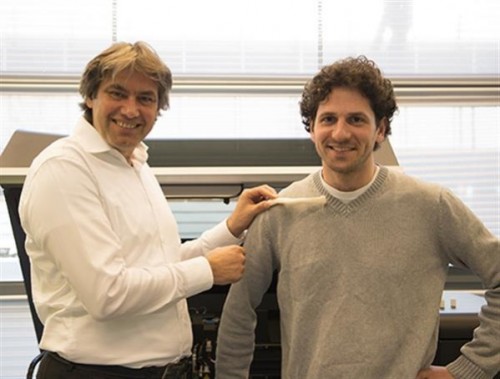The 3D printing applications in the field of medical science has helped doctors and scientists to execute any complex surgery or implanting parts within a human body more feasible in less time. Fitting in this bill Dutch scientists recreate 3D printed clavicle parts of human body and use them for surgery.
Prof Richard Goossens, Head of Section Applied Ergonomics and Design at Delft University, explains doing a clavicle surgery “isn’t so simple. In the current situation, a trauma surgeon has to screw a special plate into the patient’s shoulder, which will function as a mold for the desired shape of the rebuilt clavicle.” Professor Goossens explains that each plates cannot be of standard shape. It is customized depending from patient to patient, “Problematic in that procedure is that those plates are issued in a standard shape, rather than designed specifically to suit each patient. While this isn’t a problem eight times out of ten, the other patients will develop various complications after surgery as the angles of the joints simply aren’t optimal.”
But thanks for 3D printing technology Dr. Goossens says they are able to make replicas of clavicles, from the CT scans of the patients, and that is helping them to design the clavicles as per the patient’s need, “We use the CT scans of the patient to make 3D printed replicas of both his clavicles,’ So both the clavicle that needs to be operated on, and the healthy one on the other side. We make a mirror image of that healthy clavicle to suit his other side, and 3D print it. During surgery, the surgeon can then bend the plate to match that mirrored replica of the healthy clavicle. That means the inserted plate is entirely based on that specific patient.”
The Delft scientists are expecting that using 3D printing technology they’re able reduce the risk of complications in the patients and also reduce the number of times the surgery needs to be done. So, it is needless to say that 3D printing technology is not only helping to optimize complex work but also trying to avoid future complications post surgery.
